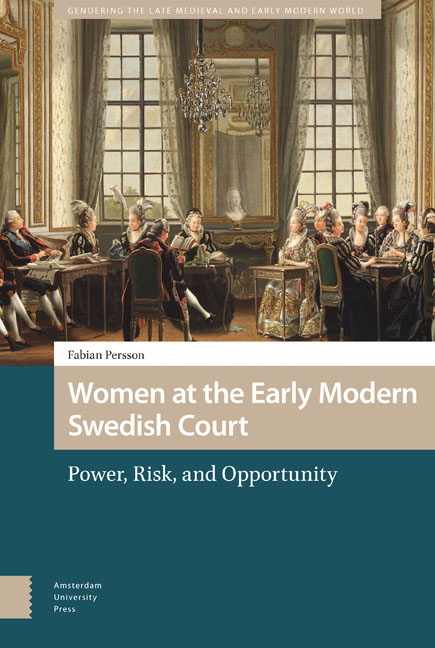8 - A Small Circle with Wide Horizons
Published online by Cambridge University Press: 15 April 2021
Summary
Abstract
Any person who joined a court changed. It was an immersive environment. Many entered court service to further their own goals – in all likelihood, that was precisely why they were there – but by living in the mental world of the court they inevitably adapted to its attitudes and norms. Most women who lived at an early modern court had commitments beyond its bounds, in most cases family, and on entering court did not surrender their old identity; they kept their existing affinities and created new ones. And, of course, they were supposed to learn and conform to the values and behaviour specific to the court environment, a point highlighted by the almost claustrophobic sense of a closed circle.
Keywords: norms, community, sisterhood, exclusion, mentality
When new Maids of Honour were appointed for Queen Frederica on her arrival in Sweden in 1797, they were young. Most of them were teenagers aged between fifteen and nineteen, the Queen herself being sixteen years old, and ‘almost none have been out in the Great World and much less at court. They are mostly real children without the least experience.’ The Chief Court Mistress Countess Piper may have been a long-serving courtier, but was viewed by Duchess Charlotta as ‘a foolish goose, who does not know how to behave’, and the young Maids of Honour were not much better. Confusion was evident even at the top, as another observer, Princess Sophia Albertina, wrote that her nephew's new Queen ‘must have had an odd education, as she has not the faintest idea about common courtesy or how to behave in company.’ Her cluelessness became more obvious when surrounded by nothing but novice Maids of Honour, with few old hands ready to guide her. The fact that the new Queen came from a smaller princely state with a more modest court added to the problem.
Any person who joined a court changed. It was an immersive environment. Many entered court service to further their own goals – in all likelihood that was precisely why they were there – but by living in the mental world of the court they inevitably adapted to its attitudes and norms.
- Type
- Chapter
- Information
- Women at the Early Modern Swedish CourtPower, Risk, and Opportunity, pp. 189 - 206Publisher: Amsterdam University PressPrint publication year: 2021



